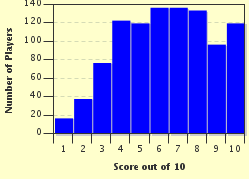Quiz Answer Key and Fun Facts
1. One of the most famous Greek letters used in science denotes a constant which is used to attain the circumference of a circle when the diameter or radius is known. Which Greek letter is this?
2. This Greek letter is used to indicate an unknown angle. It is an important letter when working out angles of elevation in mathematics and is also used in situations involving vectors in physics. Which of the following letters would it be?
3. What Greek letter is used in science, particularly in chemistry, to notate the "change in" energy given out or taken in?
4. The capital state of this Greek letter operates summation whilst the lower case state can mean standard deviation. Which letter covers both of these phenomena?
5. This Greek letter is used in physics and is the symbol used to indicate wavelength. Which of the following is it?
6. This Greek letter is used in nuclear physics and in particular, radioactivity. If an atom has expelled a helium nucleus, what type of radiation has been emitted?
7. In physics, epsilon is the Greek letter used to notate stress.
8. This Greek letter is important in biology, especially when it comes to cytology (study of cells). It holds a numerical value which is (10^-6) or 1 millionth. Which letter is it?
9. Used in the theory of probability, what Greek letter is used to denote a random variable?
10. In physics, density is found by dividing the mass (in kg) by the volume (in m^3) to attain an answer given in, amongst other units, kg m^-3. What Greek letter denotes density?
Source: Author
jonnowales
This quiz was reviewed by FunTrivia editor
crisw before going online.
Any errors found in FunTrivia content are routinely corrected through our feedback system.

